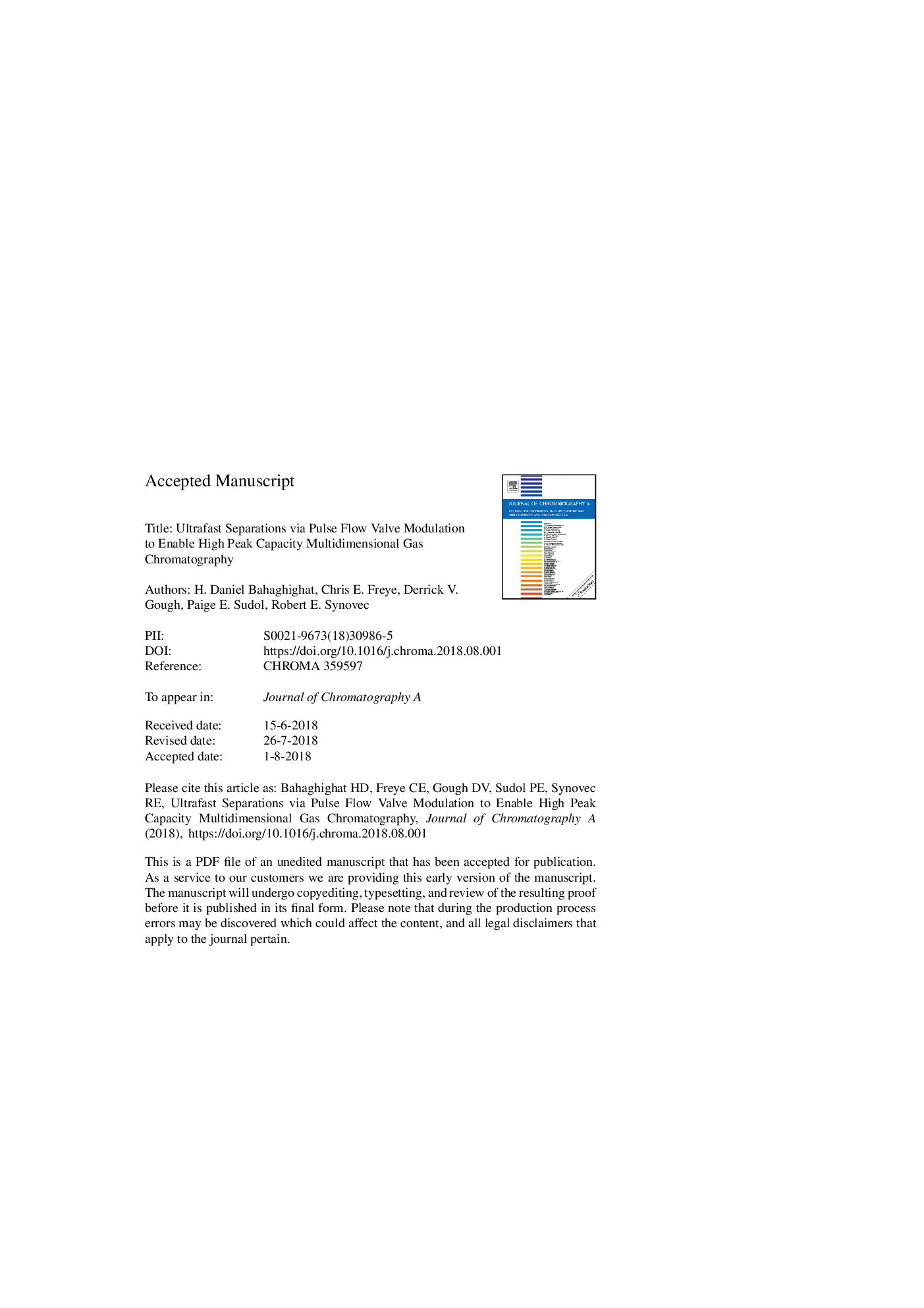| Article ID | Journal | Published Year | Pages | File Type |
|---|---|---|---|---|
| 11016080 | Journal of Chromatography A | 2018 | 27 Pages |
Abstract
Ultrafast modulation with a modulation period PM ⥠50 ms via a pulse flow valve is demonstrated for comprehensive two-dimensional gas chromatography (GC Ã GC) and comprehensive three-dimensional (3D) gas chromatography (GC3). Significant increases in peak capacity and peak capacity production are achieved for GC Ã GC and GC3 relative to previous studies due to using pulse flow valve modulation. Due to the nature of the “partial” modulation process, the separation dimension following pulse flow valve modulation is not a traditional chromatogram, rather requires data processing to convert the data to expose the encoded chromatographic information, producing “apparent” chromatographic peaks. In the GC Ã GC mode, a 115-component test mixture was evaluated using a PM of 500 ms, creating an apparent 2D peak width-at-base 2W with an average of 25 ms, producing a 2nc of 20. Based on the average 1W of 1.0 s for the 6 min first dimension 1D separation, an ideal peak capacity nc,2D of 7200 is achieved (1,200/min peak production). For a high-speed GC Ã GC separation (30 s run), a PM of 75 ms produced apparent 2W of 8 ms, ideal for the third dimension of a GC3 instrument. Using the knowledge gained from this high-speed GC Ã GC experiment, the pulse flow valve was implemented as the second modulator in GC3. Three samples were evaluated in the GC3 mode: a simple mixture containing 18 compounds (to illustrate basic concepts), the 115-component test mixture (to determine peak capacity figures-of-merit), and a diesel spiked with 8 polar compounds (to illustrate chemical selectivity benefits of GC3). For the 115-component test mixture with a 1PM of 1.2 s and a 2PM of 60 ms, average 1W of 3.2 s, 2W of 130 ms, and apparent 3W of 13 ms were produced, resulting in a 1nc of 210, 2nc of 9.2, and 3nc of 5, respectively. Hence, an ideal peak capacity, nc,3D of â¼10,000 for GC3 was achieved for the 11 min 1D separation window of the 115-component test mixture.
Related Topics
Physical Sciences and Engineering
Chemistry
Analytical Chemistry
Authors
H. Daniel Bahaghighat, Chris E. Freye, Derrick V. Gough, Paige E. Sudol, Robert E. Synovec,
